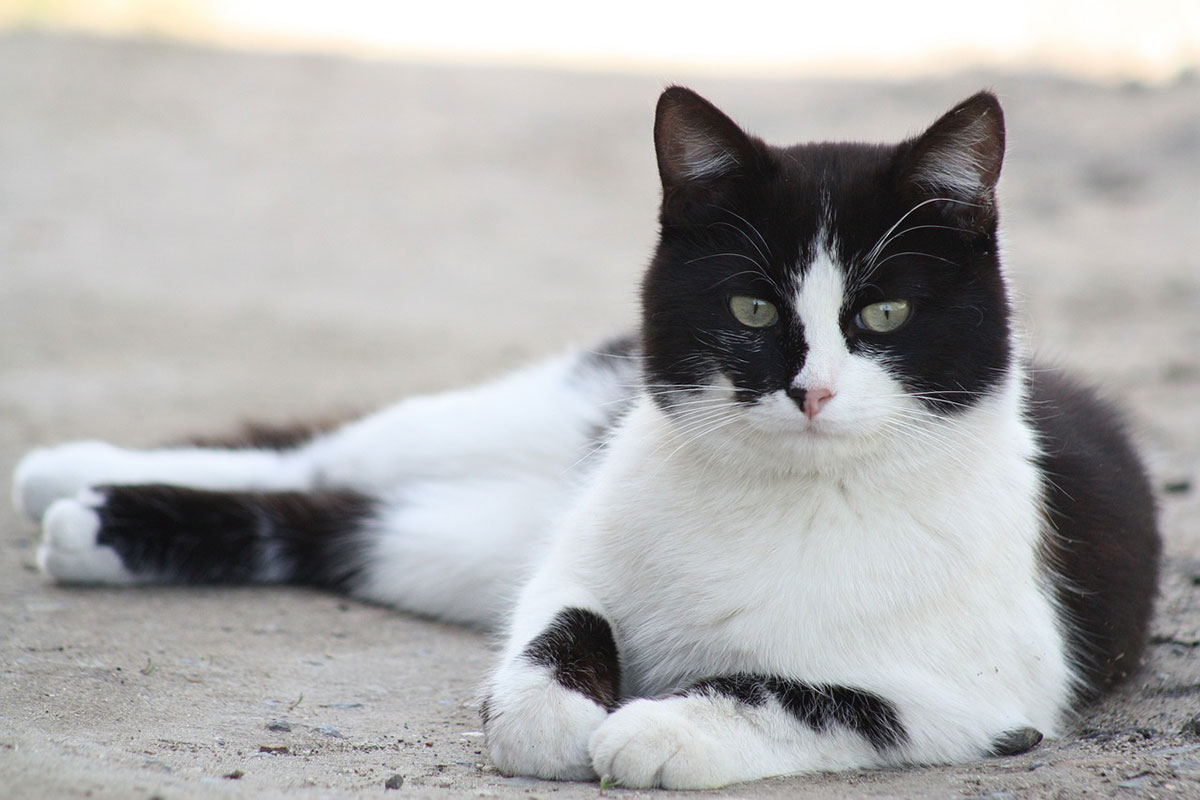The personalities of cats, including black and white ones, are as diverse as those of humans. It’s a common question whether the striking tuxedo pattern of black and white cats is linked to specific behaviors, such as friendliness.
The answer is that black and white cats can indeed be very friendly, but this trait hinges on factors beyond just their coat colors. Socialization, genetics, and the cat’s environment play pivotal roles in determining their temperament. While it’s tempting to seek a simple answer, the reality is that each cat’s friendliness is influenced by a unique blend of these elements.
Key Takeaways
- Black and white cats can be very friendly, depending on their socialization, genetics, and environment.
- Understanding a black and white cat’s friendliness requires considering their personal history and human interactions.
- While coloration alone does not determine personality, the interplay of genetics and environment is crucial in shaping behavior.
Understanding Cat Colors and Personalities
In exploring how the coat colors of cats might relate to their personalities, you’ll find intriguing connections. Research suggests a link between certain color patterns and behavior traits.
The Genetics of Black and White Cats
Black and white cats, often referred to as tuxedo cats due to their distinctive piebald patterning, inherit their coat color through a combination of genetics. The white spotting gene, which creates areas without color, and the genes for black fur work together to create their unique appearance.
| Gene Type | Effect on Coat Color |
|---|---|
| White Spotting Gene | Creates areas of no color |
| Black Fur Gene | Determines the black areas |
Understanding this genetic basis is crucial because it sets the stage for examining any personality traits that may be associated with these cats’ striking coats.
Color and Behavior Correlation
While anecdotes abound, research into whether there’s a behavioral correlation to the black and white coloration is still evolving. Some studies suggest black and white cats are often perceived as friendly and vocal, while white cats might seem more shy and reserved. Similarly, tortoiseshell cats are sometimes seen as more independent and feisty.
- Black and White Cats: Friendly, vocal
- White Cats: Shy, reserved
- Tortoiseshell Cats: Independent, feisty
It’s important for you to consider these findings with caution as they remain observational, and a cat’s environment and upbringing play significant roles in shaping its personality.
Characteristics of Black and White Cats
Black and white cats, commonly known as bicolor cats, exhibit distinct personality traits and social behaviors that set them apart. Often recognized for their contrasting fur, they are much more than their appearance.
Personality Traits in Bicolor Cats
Black and white cats are noted for having a range of personality traits that can include being:
- Friendly: Many owners report that their bicolor cats are particularly affable with family members.
- Intelligent: They often demonstrate cleverness in their interactions and play.
- Vocal: Bicolor cats may be more likely to engage in vocal communication with their humans.
- Active: They typically enjoy playful activities and exhibit high energy levels.
These traits, however, can vary widely from cat to cat and are influenced by factors such as breed, environment, and socialization.
Social Behavior in Domestic Cats
Your black and white cat’s social behavior can encompass:
- Interactions with humans: They often form strong bonds with their caregivers and are known for being affectionate companions.
- Behavior with other pets: When properly introduced and socialized, bicolor cats can get along well with other cats and even dogs.
It’s essential to recognize that while these traits are commonly reported, individual cats will always have their unique personalities, regardless of coat color.
Black and White Cat Friendliness
When you’re considering a black and white cat, it’s important to understand how varied their personalities can be. Friendliness in these cats can be influenced by a variety of factors, but remember that each cat is an individual with its own unique temperament.
Factors Affecting Cat Friendliness
Your black and white cat’s friendliness can be shaped by several elements. Socialization is key; cats that are exposed to a variety of people, places, and situations from a young age tend to be more sociable. Genetics also play a role—certain breeds have traits that may influence personality, although bicolor cats can be of many different breeds. The cat’s environment, including how much interactive play and attention you provide, also affects their friendliness.
- Socialization: The amount and quality of human contact during kittenhood.
- Genetics: Breed-specific traits that can affect behavior.
- Environment: A stimulating environment that prevents boredom and encourages interaction.
Temperament Variations in Bicolor Cats
While black and white cats, also known as bicolor or tuxedo cats, can exhibit varying temperaments, there are no set rules that dictate their behavior. Some owners report their tuxedo cats display a higher tendency for playful aggression, which can be managed with appropriate play and training. Regular veterinary visits and gentle handling from an early age can help mitigate any skittish or standoffish behaviors.
- Playful aggression: Engage in interactive play to properly direct their energy.
- Handling and veterinary care: Familiarize your cat with gentle handling and regular vet check-ups to promote ease in potentially stressful situations.
Keep in mind that these traits are general observations, and your black and white cat’s personality may differ. The key to a friendly and well-adjusted cat lies largely in nurturing care and understanding their individual needs.

